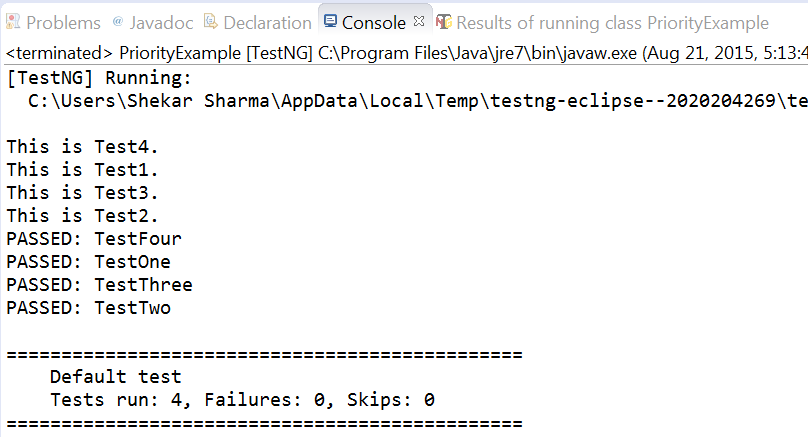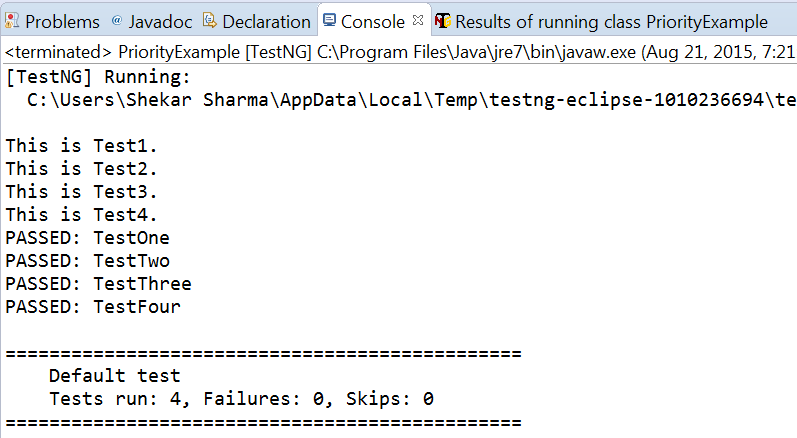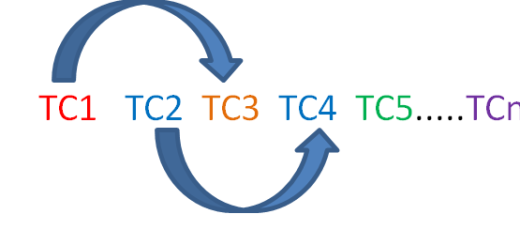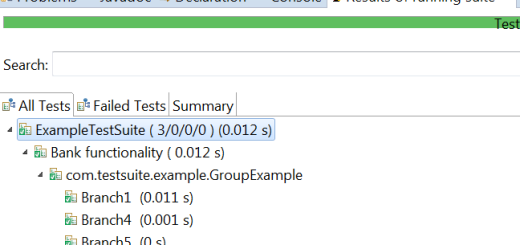Prioritizing of Test Cases in TestNG
In the previous post, we have seen the sequence of annotation execution. In this post, we will learn about Prioritizing of Test Cases in TestNG.
This is obvious in testing that we have multiple test cases to execute. In Selenium , can we put multiple tests under the same class? Yes, it is possible. You can use @Test annotation to put multiple test cases into the same class. Let’s see how.
Code for multiple tests under the same class in testNG:
Note: You can directly write annotation above method and it will prompt you to import its class. This is another way to create a TestNG class.
import org.testng.annotations.Test;
public class PriorityExample {
@Test
public void TestOne(){
System.out.println("This is Test1.");
}
@Test
public void TestTwo(){
System.out.println("This is Test2.");
}
@Test
public void TestThree(){
System.out.println("This is Test3.");
}
@Test
public void TestFour(){
System.out.println("This is Test4.");
}
}
Run this class as TestNg test as shown below.
![]()
Output: You will get the output as shown below.

![]()
What is the solution for this?
TestNG provides a way to prioritize the tests to maintain the sequence as it should be executed.

Prioritizing the methods in above class:
For prioritizing the methods , we use ‘priority‘ parameter. Parameters are keywords that can modify the annotation’s default function. Priority starts from 0. It can be put with @Test annotation above any method as shown in the program below.
import org.testng.annotations.Test;
public class PriorityExample {
@Test(priority=0)
public void TestOne(){
System.out.println("This is Test1.");
}
@Test(priority=1)
public void TestTwo(){
System.out.println("This is Test2.");
}
@Test(priority=2)
public void TestThree(){
System.out.println("This is Test3.");
}
@Test(priority=3)
public void TestFour(){
System.out.println("This is Test4.");
}
}
Output: You can observe the output below. It has been executed in the right order as it is mentioned in the class.




